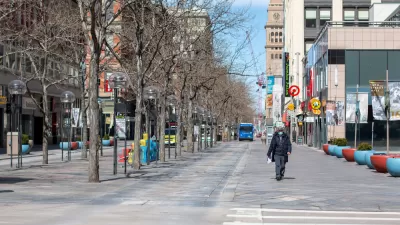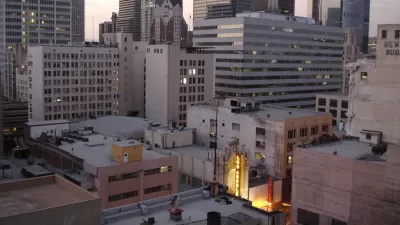Accounting for 45% of America's land mass and 30% of its population, the Great Plains, the Intermountain West, the Gulf states, and the Southeastern industrial belt are key to a national revival, says a new report from the Manhattan Institute.
Joel Kotkin summarizes a new report that he and his colleagues at the Manhattan Institute have published that points to the rising economic importance of four "growth corridors" in the United States: the Great Plains, the Intermountain West, the Third Coast (spanning the Gulf states from Texas to Florida), and the Southeastern industrial belt. "Historically," says Kotkin, "these regions were little more than resource colonies or low-wage labor sites for richer, more technically advanced areas. By promoting policies that encourage enterprise and spark economic growth, they're catching up."
"These regions have different histories and different trajectories into the future, but they share certain key drivers of economic growth: lower costs (particularly for housing); better business climates; and population growth. Some have benefited from the strong global market for commodities, particularly food, natural gas, and oil. Others are expanding because of a resurgence in manufacturing in the United States."
"To be sure, New York, Los Angeles, the San Francisco Bay Area, and Chicago will remain the country's leading metropolitan agglomerations for the foreseeable future," he acknowledges. "But an important urban story of the coming decades will be the emergence of interior metropolitan areas such as Houston, Dallas–Fort Worth, Tampa, Oklahoma City, and Omaha. On a smaller scale, fast-growing Lafayette (Louisiana), Baton Rouge, Midland (Texas), Sioux Falls (South Dakota), Fargo, and a host of other smaller cities will continue to expand. We may also witness the resurgence of New Orleans as a leading cultural and business center for the south and the Gulf Coast."
"The corridors' growing success is a testament to the resiliency and adaptability of the American economy," Kotkin concludes. "It also challenges the established coastal states and cities to reconsider their current high-tax, high-regulation climates if they would like to join the growth party."
FULL STORY: America's Growth Corridors: The Key to a National Revival - A New Report

Maui's Vacation Rental Debate Turns Ugly
Verbal attacks, misinformation campaigns and fistfights plague a high-stakes debate to convert thousands of vacation rentals into long-term housing.

Planetizen Federal Action Tracker
A weekly monitor of how Trump’s orders and actions are impacting planners and planning in America.

In Urban Planning, AI Prompting Could be the New Design Thinking
Creativity has long been key to great urban design. What if we see AI as our new creative partner?

King County Supportive Housing Program Offers Hope for Unhoused Residents
The county is taking a ‘Housing First’ approach that prioritizes getting people into housing, then offering wraparound supportive services.

Researchers Use AI to Get Clearer Picture of US Housing
Analysts are using artificial intelligence to supercharge their research by allowing them to comb through data faster. Though these AI tools can be error prone, they save time and housing researchers are optimistic about the future.

Making Shared Micromobility More Inclusive
Cities and shared mobility system operators can do more to include people with disabilities in planning and operations, per a new report.
Urban Design for Planners 1: Software Tools
This six-course series explores essential urban design concepts using open source software and equips planners with the tools they need to participate fully in the urban design process.
Planning for Universal Design
Learn the tools for implementing Universal Design in planning regulations.
planning NEXT
Appalachian Highlands Housing Partners
Mpact (founded as Rail~Volution)
City of Camden Redevelopment Agency
City of Astoria
City of Portland
City of Laramie





























